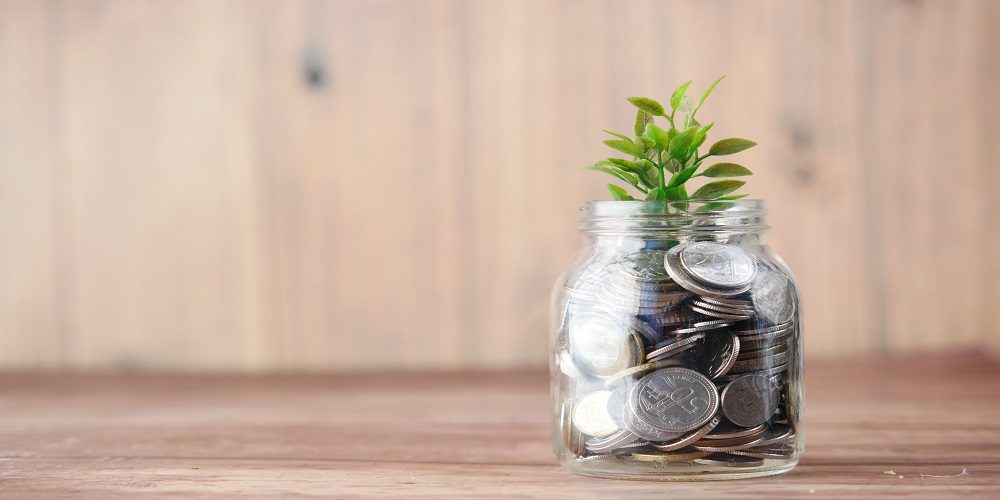Welcome to a world where budgeting is not only easy but also fun! If you’re tired of traditional spreadsheets and complicated apps, we have a simple and effective solution for you: money jars. These magical containers are about to revolutionize your financial habits, allowing you to effortlessly track your spending and save with ease. Join us as we delve into the concept of money jars and uncover the secrets behind this game-changing budgeting technique.
Introduction to the concept of money jars
Money jars, also known as envelope budgeting or the cash envelope system, are a simple and effective budgeting technique that helps individuals or households manage their finances. The concept of money jars involves dividing your income into different categories and allocating specific amounts of cash into each jar or envelope for different expenses such as groceries, bills, entertainment, and savings.
The idea behind using physical jars or envelopes is to have a visual representation of your budget and spending. This makes it easier to track your expenses and stay within your allocated budget for each category. Money jars are a great alternative to traditional budgeting methods that rely on digital tools or credit or debit cards.
What are money jars, and how do they work?
Money jars, also known as “envelope budgeting,” are a simple and effective budgeting technique that helps individuals or families manage their finances. This method involves using physical jars or envelopes to divide and allocate funds for different expenses, such as groceries, bills, entertainment, savings, etc.
The concept of money jars is based on the idea of separating your income into different categories and limiting your spending within each category. The physical aspect of having tangible jars or envelopes serves as a visual representation of your financial goals and can help you stay accountable to your budget.
To start using money jars, you will need to determine how much money you have available for budgeting. This can include your monthly income minus any fixed expenses such as rent, mortgage payments, or loan repayments. Once you have this amount, you can then decide on the categories in which you want to allocate your funds.
The most common categories used in money-jar budgeting include:
1. Necessities: This category includes expenses that are essential for daily living, such as rent or mortgage payments, utilities, groceries, transportation costs, etc.
2. Discretionary spending: These are non-essential expenses that can vary from person to person but may include dining out at restaurants, shopping trips, or entertainment.
3. Savings: It is crucial to allocate a portion of your income towards savings for future needs and emergencies.
4. Debts: If you have any outstanding debts, like credit card balances or loans, it is important to allocate a portion of your budget towards paying them off.
The benefits of using money jars for budgeting
Money management can be a daunting task, but it is essential for maintaining financial stability and achieving our financial goals. One popular budgeting technique that has gained traction in recent years is the use of money jars. Money jars are a simple yet effective method for budgeting and managing your finances. In this section, we will discuss the various benefits of using money jars for budgeting.
1. Easy to Implement:
One of the main benefits of using money jars for budgeting is their simplicity. Unlike other complex budgeting methods, money jars require minimal effort to set up and maintain. All you need are a few empty jars or containers labeled with different spending categories such as groceries, bills, savings, etc., and you’re ready to go. This makes it an ideal budgeting technique for those who are just starting their journey towards financial stability.
2. Helps prioritize spending:
Using money jars allows you to prioritize your expenses based on your needs and wants. By dividing your income into different categories like necessities (rent, groceries, bills) and discretionary spending (entertainment, shopping), you can ensure that the most crucial expenses are taken care of before indulging in non-essential purchases. This helps prevent overspending on unnecessary items and ensures that all your basic needs are met.
3. Encourages mindful spending:
With traditional budgeting methods like debit or credit cards or online banking, it’s easy to lose track of how much we spend each day. On the other hand, using physical cash
Step-by-Step Guide to Setting Up Money Jars:
1. Define your financial goals: The first step to setting up money jars is to have a clear understanding of your financial goals. This could be anything from paying off debt, saving for a big purchase, or building an emergency fund. Having a specific goal in mind will help you allocate your money to the right jars.
2. Determine your spending categories: It’s important to categorize your expenses into different areas such as groceries, bills, entertainment, and savings. This will give you a better understanding of where your money is going and how much you should allocate to each jar.
3. Decide on the number of jars. The beauty of using money jars is that they can be customized according to your needs and financial situation. You may choose to have three jars for necessities, wants, and savings or add more specific categories like travel or education.
4. Label and decorate your jars: Once you have determined the number of jars you need, label them accordingly with their designated category. You can also get creative and decorate them with stickers or paint to make them more visually appealing.
5.
Determine how much to allocate in each jar: This step requires some budgeting work on your part. Take a look at your monthly income and expenses and determine how much you can realistically put into each jar without stretching yourself too thin.
Example of a budget using money jars
Budgeting is an essential aspect of managing personal finances. It allows individuals to track their spending, save money for future goals, and live within their means. However, traditional budgeting methods can be overwhelming and confusing for some people. This is where the concept of money jars comes in – a simple and effective technique that helps individuals budget their money without feeling overwhelmed.
Money jars refer to the physical or virtual containers used to allocate funds for specific purposes within a budget. The idea behind this technique is to divide your income into different categories or “jars” based on your financial goals or expenses. Each jar represents a particular aspect of your finances, such as bills, groceries, savings, entertainment, and more.
To better understand how money jars work, let’s take a look at an example of a budget using money jars:
1. Start by identifying your main sources of income: The first step in creating any budget is knowing how much money you have coming in each month. This could include your salary from a job, freelance income, side hustles, or any other source of income.
2. Determine your necessary expenses: These are the fixed costs that you must pay every month without fail – rent/mortgage payments, utilities (electricity/water/internet), insurance premiums, loan repayments (if any), etc. These items should be allocated in one jar labeled “Bills.”
Tips and tricks for successful use of money jars
Money jars, also known as the envelope budgeting system, have been around for decades and are still one of the most effective budgeting techniques. This simple yet powerful approach to managing your finances involves dividing your income into different categories and physically allocating cash into designated jars or envelopes.
While money jars may seem straightforward, there are some tips and tricks that can help you make the most of this budgeting technique. In this section, we will explore some practical ways to successfully use money jars.
1. Set clear and specific categories: The first step to implementing a successful money jar system is to define your spending categories. These could vary depending on your financial goals and priorities, but should cover all essential expenses such as rent or mortgage, groceries, transportation, entertainment, savings, etc. By setting precise categories, you can easily track where your money is going and identify areas where you need to cut back.
2. Determine realistic amounts for each category: Once you have established your spending categories, it’s essential to set realistic limits for each one based on your income and expenses. Be honest with yourself about how much you spend in each category every month; this will help you avoid overspending or underbudgeting.
3. Use physical jars or envelopes: While technology has made it possible to do most things digitally nowadays, using physical jars or envelopes for money jars is more effective when it comes to sticking to a budget.
Alternatives to the money jar technique
While the money-jar technique can be effective for some individuals, it may not work for everyone. If you have tried this budgeting method and found that it is not the right fit for you, there are several alternatives to consider. Here are some alternative budgeting techniques that you may want to explore:
1. Envelope Budgeting
Similar to the money jar technique, envelope budgeting involves dividing your income into different categories or envelopes. You would then physically allocate cash to each envelope based on your budget for that category. This method helps you stay within your budget, as once an envelope is empty, you cannot spend any more in that category until the next period.
2. Tracking Apps
With advancements in technology, there are now many budget tracking apps available on smartphones and computers. These apps allow you to input your income and expenses and track them in real-time. Some even offer features like setting financial goals and providing insights into spending patterns.
3. Zero-Based Budgeting
Zero-based budgeting involves creating a detailed plan for every dollar of your income and assigning each dollar a specific purpose, such as bills, savings, investments, etc. This method requires careful tracking of expenses but can help ensure every dollar is accounted for and goes towards achieving financial goals.
4. 50/30/20 Method
This approach involves dividing your after-tax income into three categories: needs (50%), wants (30%), and savings (20%). The goal is to ensure that necessities are covered while also leaving room for non-essentials.
Conclusion
After exploring the concept of money jars and learning about the benefits and potential drawbacks, you may be wondering if this budgeting technique is right for you. The truth is, there is no one-size-fits-all solution when it comes to managing finances. What works for one person may not work for another.





























